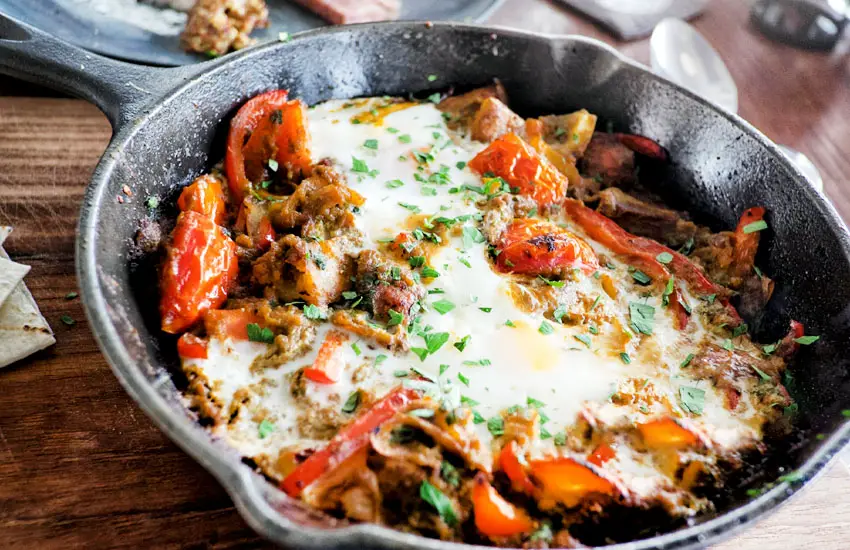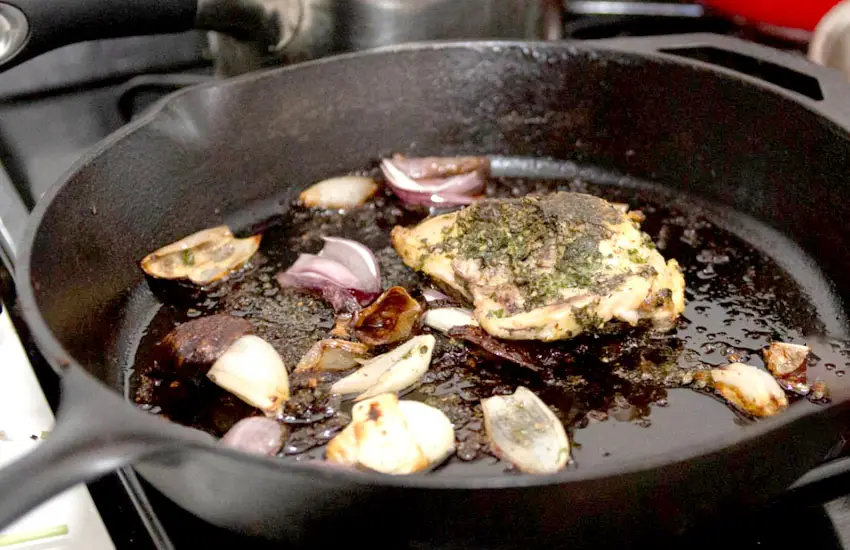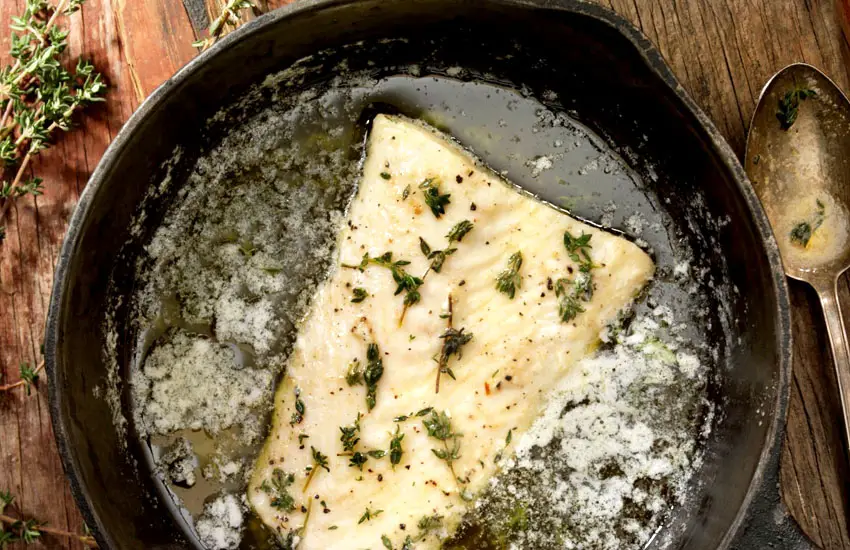As an Amazon Associate, I earn from qualifying purchases at no extra cost to you.
Cast Iron Cookware Advantages and Disadvantages
Have you ever wondered why some chefs swear by their trusty cast iron skillet while others opt for sleeker, more modern alternatives? It’s a question many home cooks ponder as they navigate the world of kitchenware. In this blog post, we’ll explore the advantages and disadvantages of using cast iron cookware.
From its ability to create mouthwatering dishes to its potential challenges in maintenance, we’ll help you decide if cast iron is the right choice for your culinary adventures. So, whether you’re a seasoned chef or a novice in the kitchen, let’s unravel the mysteries of cast iron cookware together. Are you ready to find out if it’s the perfect fit for your cooking style? Let’s dive in!

The Benefits of Using a Cast Iron Skillet
Cooking is a joyous activity that brings families together and fills homes with delightful aromas. And when it comes to cooking tools, one kitchen essential stands out: the cast iron skillet. This trusty kitchen companion has been around for generations, and its popularity persists for a good reason. Let’s explore the wonderful benefits of using a cast iron skillet in your kitchen.

1. Durability and Longevity
When you invest in a cast iron skillet, you’re investing in a piece of cookware that’s built to last a lifetime, and then some. Unlike other pans that wear out over time, a well-maintained cast iron skillet can withstand decades of use. It’s sturdy, reliable, and can even be passed down through generations, becoming a cherished heirloom in your family.
2. Versatility in Cooking
One of the fantastic things about a cast iron skillet is its versatility. Whether you’re frying, searing, baking, or even grilling, this multipurpose tool can handle it all. From crispy bacon to golden cornbread, from juicy steaks to fluffy pancakes, the possibilities are endless. With a cast iron skillet in your kitchen, you’ll be ready to tackle any recipe with ease.
3. Superior Heat Retention and Distribution
Cast iron is a champion when it comes to heat retention and distribution. Unlike other materials that may have hot spots or uneven heating, a cast iron skillet heats up evenly and holds onto that heat like a pro. This means your food cooks more consistently, resulting in perfectly browned crusts, tender meats, and delectable flavors.
4. Natural Non-Stick Properties
Forget about those chemical-laden non-stick pans that wear out over time. With proper seasoning, a cast iron skillet develops its own natural non-stick surface that only gets better with each use. This means less sticking and easier cleanup, allowing you to enjoy your cooking experience without worrying about stubborn residue.
5. Adds Nutritional Value to Your Meals
Did you know that cooking in a cast iron skillet can actually add trace amounts of iron to your food? It’s true! As you cook, small amounts of iron leach into your meals, providing a subtle nutritional boost. This is especially beneficial for individuals who may be at risk of iron deficiency. So not only does your cast iron skillet make delicious meals, but it also helps keep you healthy.
6. Cost-Effectiveness
While a cast iron skillet may have a slightly higher upfront cost compared to other pans, its long-term value more than makes up for it. Think of it as an investment in your kitchen arsenal that pays dividends over time. With proper care, your cast iron skillet will outlast many of its cheaper counterparts, saving you money in the long run.
7. Environmentally Friendly
In today’s world, sustainability is more important than ever. Luckily, cast iron skillets are an environmentally friendly choice for your kitchen. Made from natural materials and free from harmful chemicals, they have minimal impact on the planet. Plus, their durability means fewer pans end up in landfills, reducing waste and helping to preserve our environment for future generations.
From its durability and versatility to its superior heat retention and natural non-stick properties, this kitchen staple truly shines. Not only does it make cooking a breeze, but it also adds nutritional value to your meals, saves you money in the long run, and helps protect the environment.
The Disadvantages of Cast Iron Cookware
Cooking is fun, but sometimes our trusty kitchen tools come with their own set of challenges. Let’s take a closer look at cast iron cookware – it’s heavy, needs special care, and has a few other quirks you might want to know about.

1. Heavyweight
Cast iron cookware is notoriously heavy compared to its counterparts. While this weight can provide stability during cooking, it can also pose challenges for those with limited strength or mobility. Handling and maneuvering a heavy skillet may require extra effort and caution.
2. Requires Seasoning and Maintenance
Unlike non-stick pans that are ready to use out of the box, cast iron cookware requires seasoning to develop its non-stick surface. Seasoning involves coating the skillet with oil and baking it to create a protective layer. Additionally, cast iron cookware demands regular maintenance, including thorough drying and periodic re-seasoning to prevent rust.
3. Reactive to Acidic Foods
Acidic ingredients, such as tomatoes or citrus fruits, can react with the iron in cast iron cookware, leading to a metallic taste in your dishes. This reaction can also cause discoloration and affect the appearance of your cookware. Avoiding acidic foods or using a different type of pan for such ingredients may be necessary.
4. Not Dishwasher Safe
Cast iron cookware should never be cleaned in the dishwasher. The harsh detergents and high heat can strip away the seasoning and promote rusting. Instead, hand washing with mild soap and thorough drying is recommended to preserve the skillet’s integrity and non-stick properties.
5. Slow Heating and Cooling
While cast iron excels at retaining heat, it also takes longer to heat up and cool down compared to other materials. This slower response time can make it challenging to adjust cooking temperatures quickly and achieve precise results, especially for recipes that require rapid changes in heat levels.
6. Prone to Rusting if Not Properly Maintained
Moisture is the enemy of cast iron cookware. If not properly dried and seasoned after each use, cast iron skillets are susceptible to rusting. Even a small amount of moisture left on the surface can lead to unsightly rust spots, compromising the skillet’s performance and longevity.
7. Initial Investment and Upkeep
While cast iron cookware can offer long-term value, it often requires a higher initial investment compared to other types of pans. Additionally, ongoing upkeep, such as purchasing seasoning materials and dedicating time to maintenance, can be seen as a drawback for some users.
Conclusion
While cast iron cookware boasts many benefits, including durability and versatility, it’s essential to consider the potential drawbacks before making a purchase. From its heavyweight and maintenance requirements to its reactivity with acidic foods, cast iron cookware may not be the ideal choice for every kitchen. However, with proper care and attention, these drawbacks can be mitigated, allowing you to enjoy the many advantages that cast iron cookware has to offer.
